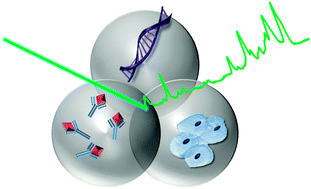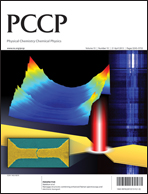Recent developments and future directions in SERS for bioanalysis
Abstract
The ability to develop new and sensitive methods of biomolecule detection is crucial to the advancement of pre-clinical disease diagnosis and effective patient specific treatment. Surface enhanced Raman scattering (

- This article is part of the themed collection: Plasmonics and spectroscopy

 Please wait while we load your content...
Please wait while we load your content...